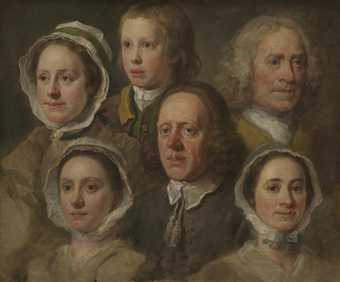
William Hogarth, Heads of Six of Hogarth’s Servants ³¦.1750–5. Tate.
Metropolis 1720–1760
17 rooms in Historic and Early Modern British Art
London is the largest city in Europe, a hub of global trade and commerce. Artists such as William Hogarth show us the many sides of urban life
During a period of peaceful economic growth in Western Europe, London becomes a thriving market of commercial exchanges and coffee houses. Along with Bristol and Liverpool, London is also a hub of the transatlantic slave trade. The resulting goods and profits pour into British cities. When war breaks out in 1756, victory over France allows Britain to strengthen its position abroad, expanding its North American colonies and consolidating power in India.
Religious zeal and conflict have receded, while new commercial values hold sway. Wealthy merchants now play an important role in London’s art market, alongside aristocrats and landowners. Artists depict them in small-scale group portraits of family and friends, known as ‘conversation pieces’. This new format becomes a particularly British genre of painting. These fashionable scenes of polite society show a booming consumer culture, derived from Britain’s colonial wealth: tobacco is smoked, tea and coffee are sweetened with sugar, then drunk from Chinese porcelain.
Hogarth’s conversation pieces are celebrated for their informality and vibrancy. His images of bustling city life and his biting satires, which cross social classes, are also hugely popular. While some of the best European artists, such as the Italian painter Canaletto, still come to London, there are also renewed efforts to establish a home-grown British school of painting. This is a cause that Hogarth champions with particular vigour.
Pablo Bronstein, Molly House 2023
1/28
artworks in Metropolis
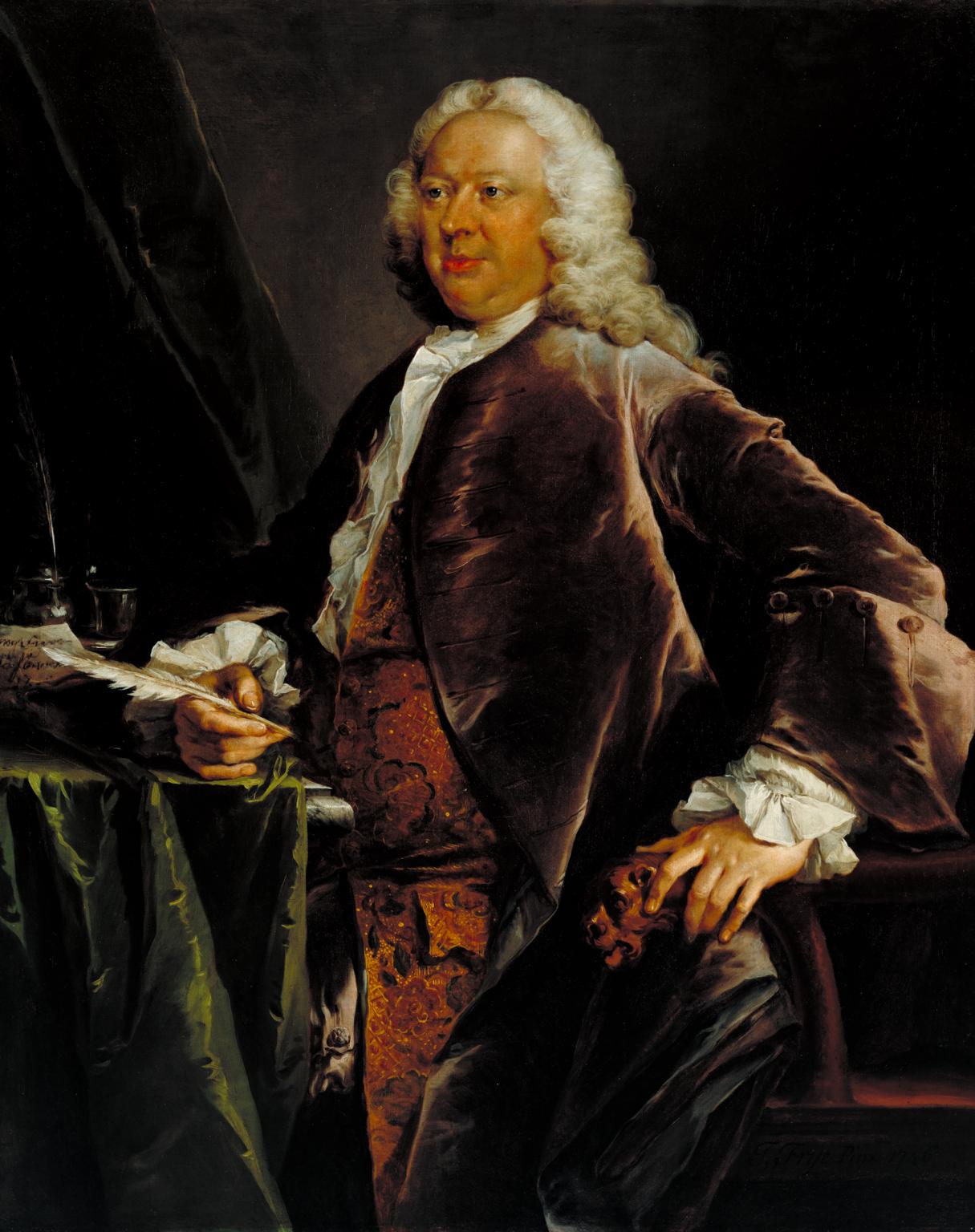
Thomas Frye, Henry Crispe of the Custom House 1746
Henry Crispe worked at the Custom House, London, where goods arriving by ship were checked and duties collected. At this time, the Port of London was undergoing rapid growth, becoming the largest in the world. A huge number of ships transported goods from colonised countries to Britain. By the end of the century, a separate West India Dock was built on the edge of London to deal with ships returning from the Caribbean. Frye had aspirations as a poet as well as working in business, represented by the quill and the writing materials on the table.
Gallery label, September 2024
2/28
artworks in Metropolis
Sonia Barrett, Lady of the House 2012
3/28
artworks in Metropolis
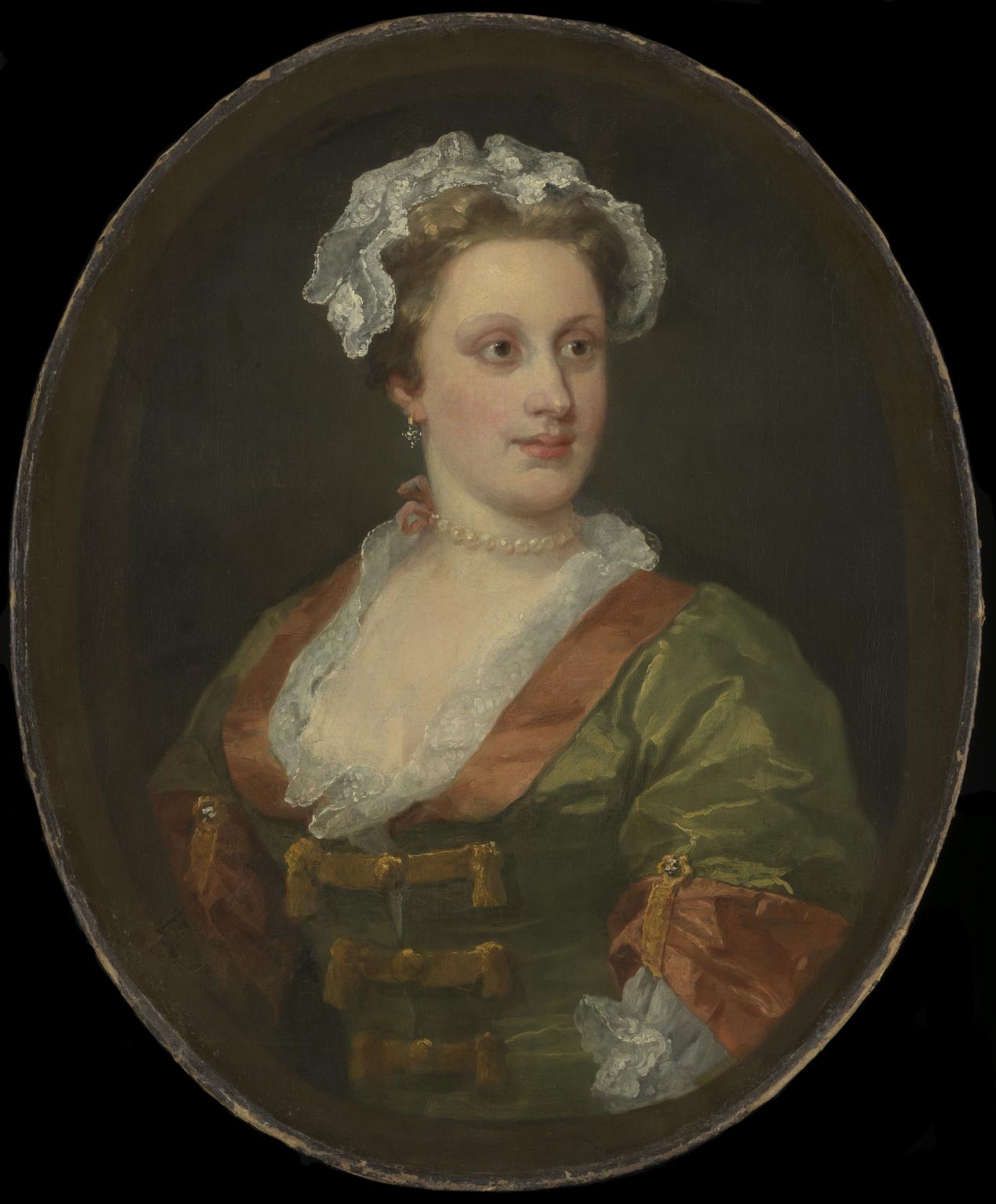
William Hogarth, Lavinia Fenton, Duchess of Bolton &²Ô²ú²õ±è;³¦.1740–50
We think this is a portrait of the actress and singer Lavinia Fenton (1708–1760), who starred as the heroine Polly Peachum in the original and highly successful 1728 production of The Beggar’s Opera. After it closed, Fenton ran away with her lover, Charles Paulet, 3rd Duke of Bolton (1685–1754) and the couple had three sons. When the Duke’s estranged wife died in 1751, the Duke and Lavinia married, and she became Duchess of Bolton. This portrait – if correctly identified – shows her in later life.
Gallery label, September 2024
4/28
artworks in Metropolis
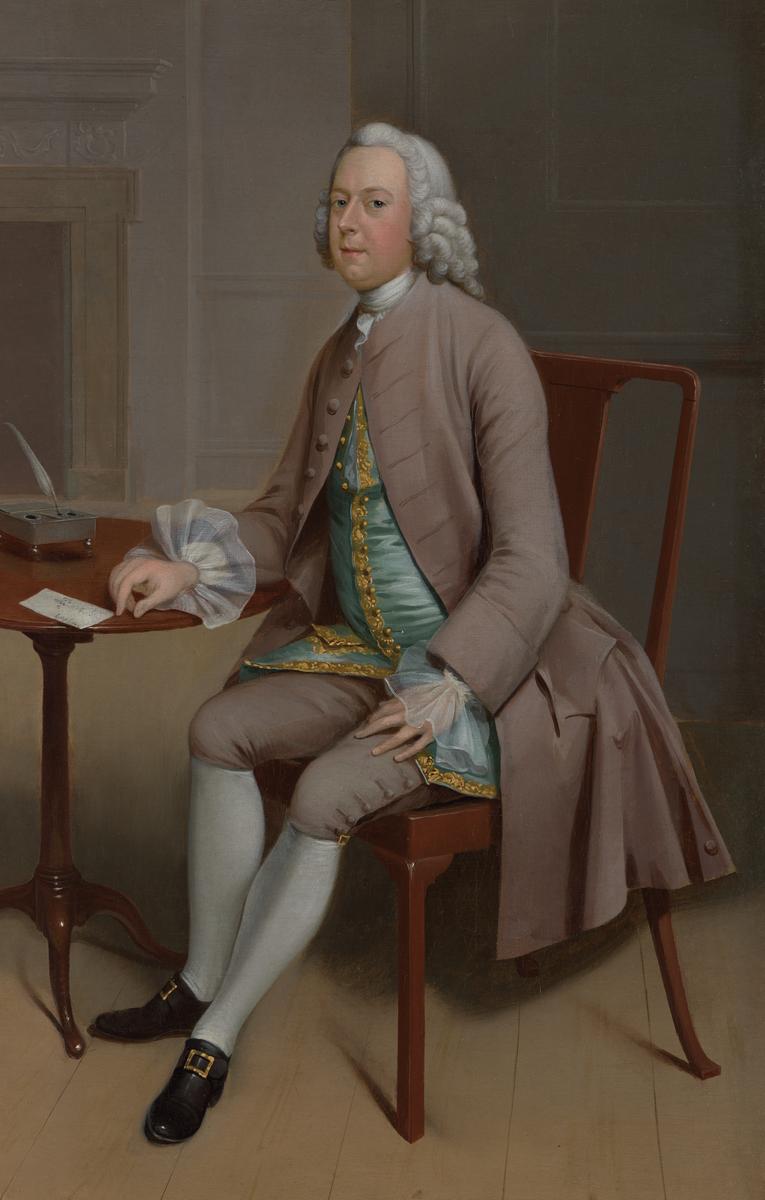
Arthur Devis, Portrait of a Man c.1750
Arthur Devis was originally from Preston, Lancashire, but he moved to London where he built a prosperous business. His studio was in Great Queen Street, Lincoln’s Inn Fields, an area much favoured by artists. The identity of this sitter is not known, although he appears elegantly attired, seated in a bare yet fashionable interior. Recent conservation treatment and research has shown that this is one half of what was once a larger picture, originally showing a woman seated on the other side of the table.
Gallery label, September 2024
5/28
artworks in Metropolis
Sonia Barrett, Chair no. 35 2013
6/28
artworks in Metropolis
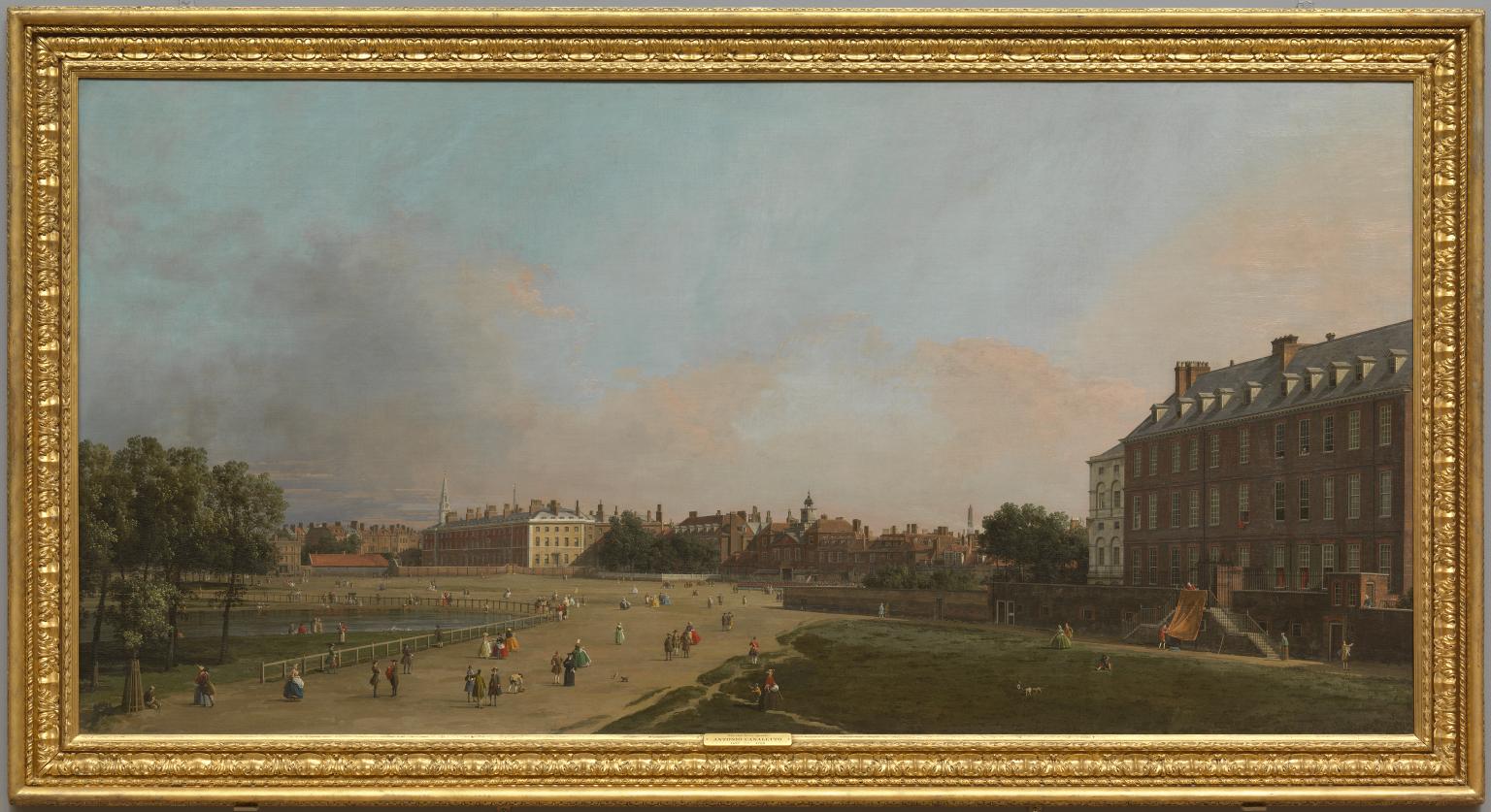
Canaletto (Giovanni Antonio Canal), London: The Old Horse Guards from St James’s Park c.1749
Horse Guards, the building with the clocktower in the centre, was the headquarters of the Commander-in-Chief of the army, and housed the horse guards and some foot guards. It was replaced in the 1750s with the white stone building that stands today. Canaletto’s paintings were in demand from rich patrons. However, this work was produced speculatively, possibly in the hope of selling it to a wealthy resident of Downing Street (seen on the right). Canaletto invited prospective buyers to view the painting at his Soho lodgings.
Gallery label, November 2016
7/28
artworks in Metropolis
Canaletto (Giovanni Antonio Canal), London: the New Horse Guards from St James’s Park &²Ô²ú²õ±è;³¦.1752–3
This painting is closely related to other views of Horse Guards by Canaletto, including the much larger and slightly earlier image which hangs nearby. Here Canaletto shows the construction of the new Horse Guards building, the original red-brick building having been demolished in 1749–50. Much larger than the earlier building and formed of white stone, it was designed in the classical style by William Kent. Wooden scaffolding can be seen supporting the clock tower, and work on the south wing is yet to begin. This is the building that exists to this day.
Gallery label, November 2016
8/28
artworks in Metropolis
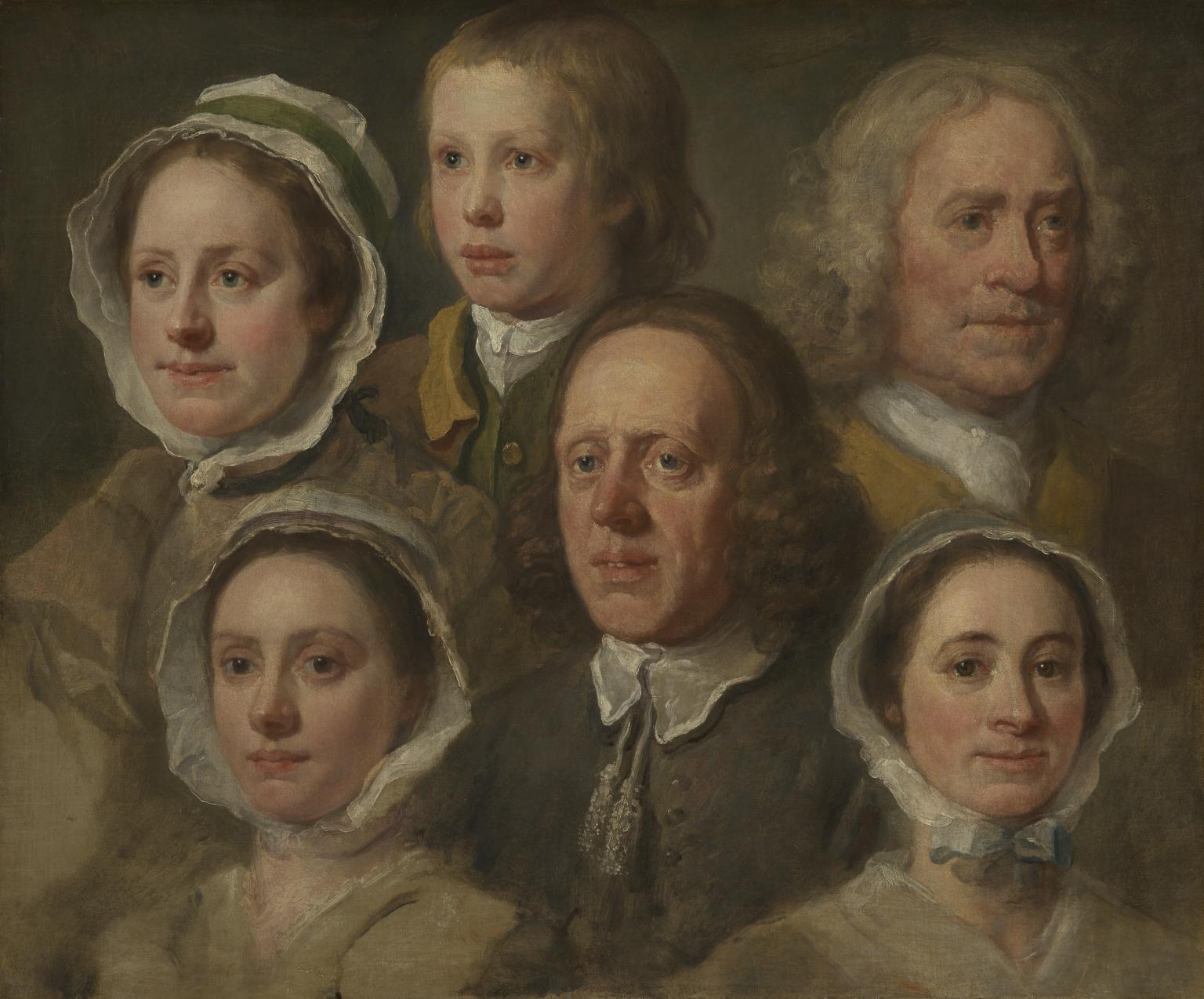
William Hogarth, Heads of Six of Hogarth’s Servants &²Ô²ú²õ±è;³¦.1750–5
In its realism, informality and immediacy, this study of William Hogarth’s servants appears to capture each sitter’s individuality. The result is a remarkable and rare portrait of members of the 18th-century British working class. The picture may also have served as a kind of advertisement for Hogarth’s skills as a working portraitist, intended to attract wealthy clients who would have been able to see the painting in Hogarth’s studio.
Gallery label, September 2024
9/28
artworks in Metropolis
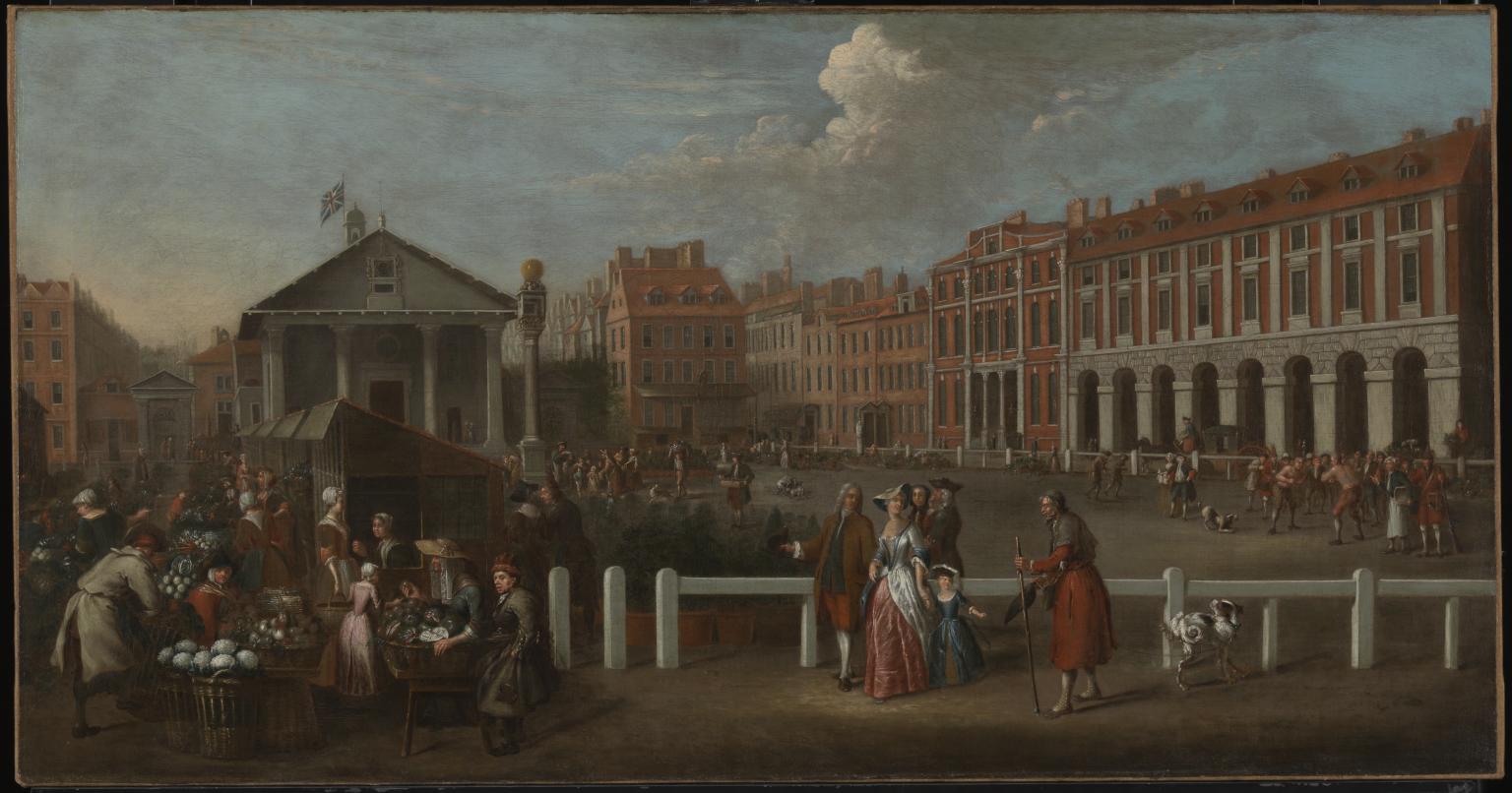
Balthazar Nebot, Covent Garden Market 1737
Balthazar Nebot’s view of Covent Garden looks west towards St Paul’s Church. It depicts the activities and architecture of Covent Garden which, by the 1730s, was at the heart of London’s artistic community. It was a popular urban subject for painters. The market was first developed in the 1650s. 20 years later, the Earl of Bedford was given permission to ‘hold forever a market in the Piazza on every day in the year except Sundays and Christmas Day for the buying and selling of all manner of fruit, flowers, roots and herbs.’
Gallery label, September 2024
10/28
artworks in Metropolis
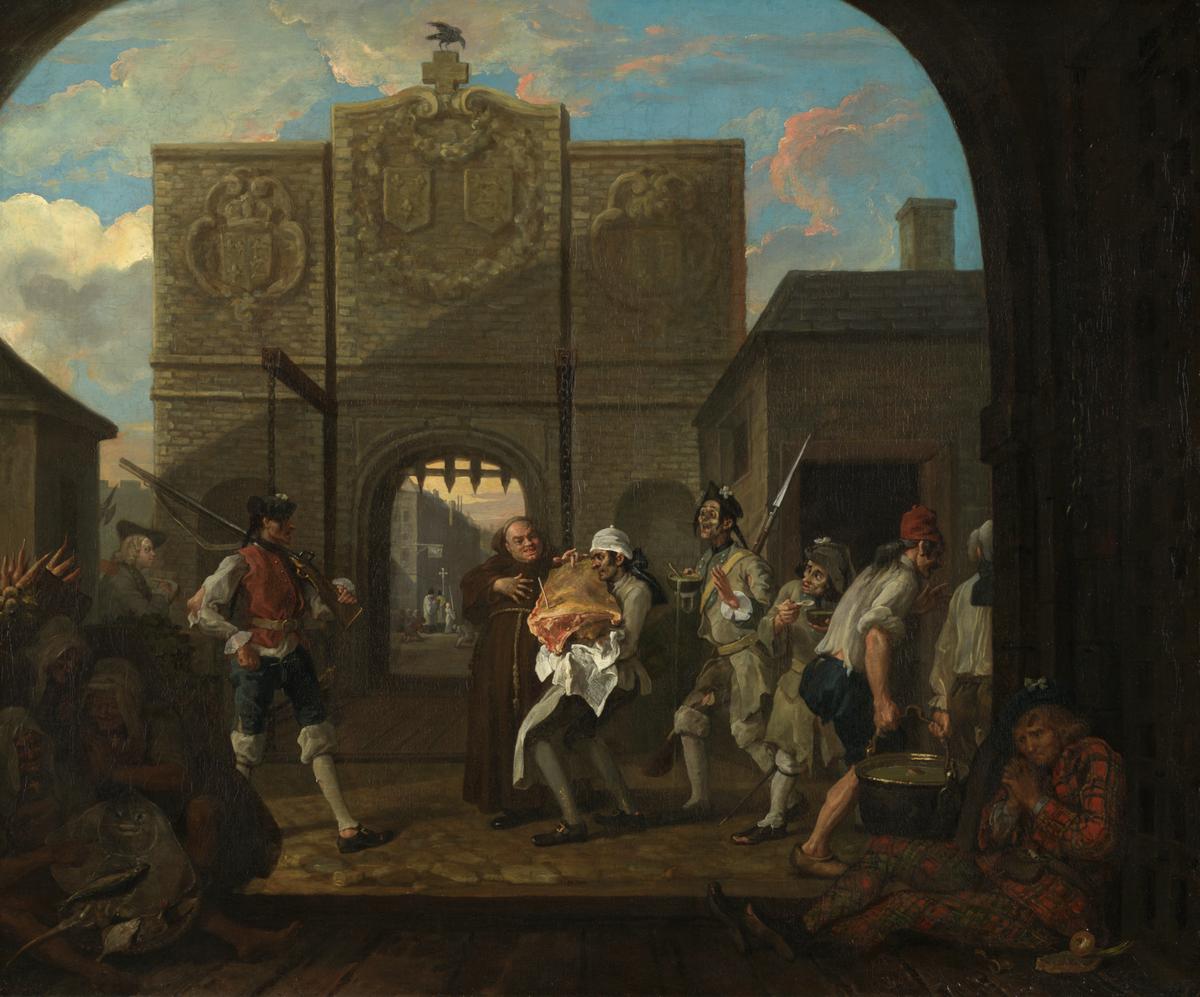
William Hogarth, O the Roast Beef of Old England (‘The Gate of Calais’) 1748
This picture is based on a real event when Hogarth was arrested as a suspected spy in Calais for sketching the gate of the fort. Hogarth includes a self-portrait in the far left, portraying himself as a sharp-eyed observer of his surroundings. But the picture also serves as an allegory of English nationalism. It depicts a collection of xenophobic stereotypes, including underfed French soldiers, an exiled Scottish Jacobite rebel, and a greedy Catholic friar. The imported British beef contrasts with the watery French soup.
Gallery label, September 2024
11/28
artworks in Metropolis
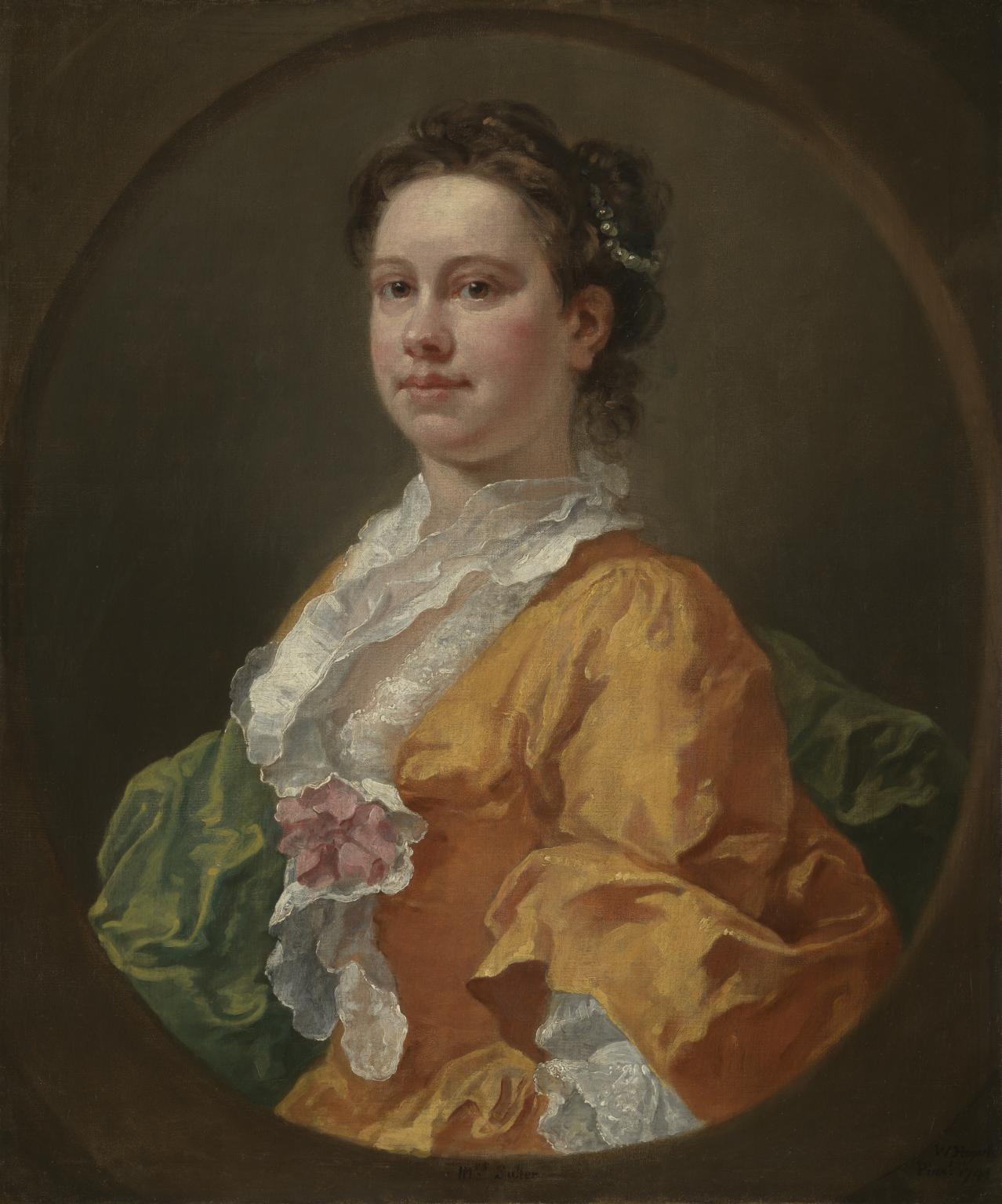
William Hogarth, Mrs Salter 1741
In this innovative portrait Hogarth has applied the paint in thick broad strokes which accentuate the folds in the draperies and serve to heighten the sculptural aspect of the work. The white lace ruffles on the bodice appear to stand proud from the dress as an independent feature, forming an ‘s’ curve around the pink floral bow. This device may well be an early attempt by Hogarth to give visual form to his so-called ‘Line of Beauty and Grace’, a serpentine curve which Hogarth perceived as the basis for the most beautiful forms to be found in art and nature.
Gallery label, February 2010
12/28
artworks in Metropolis
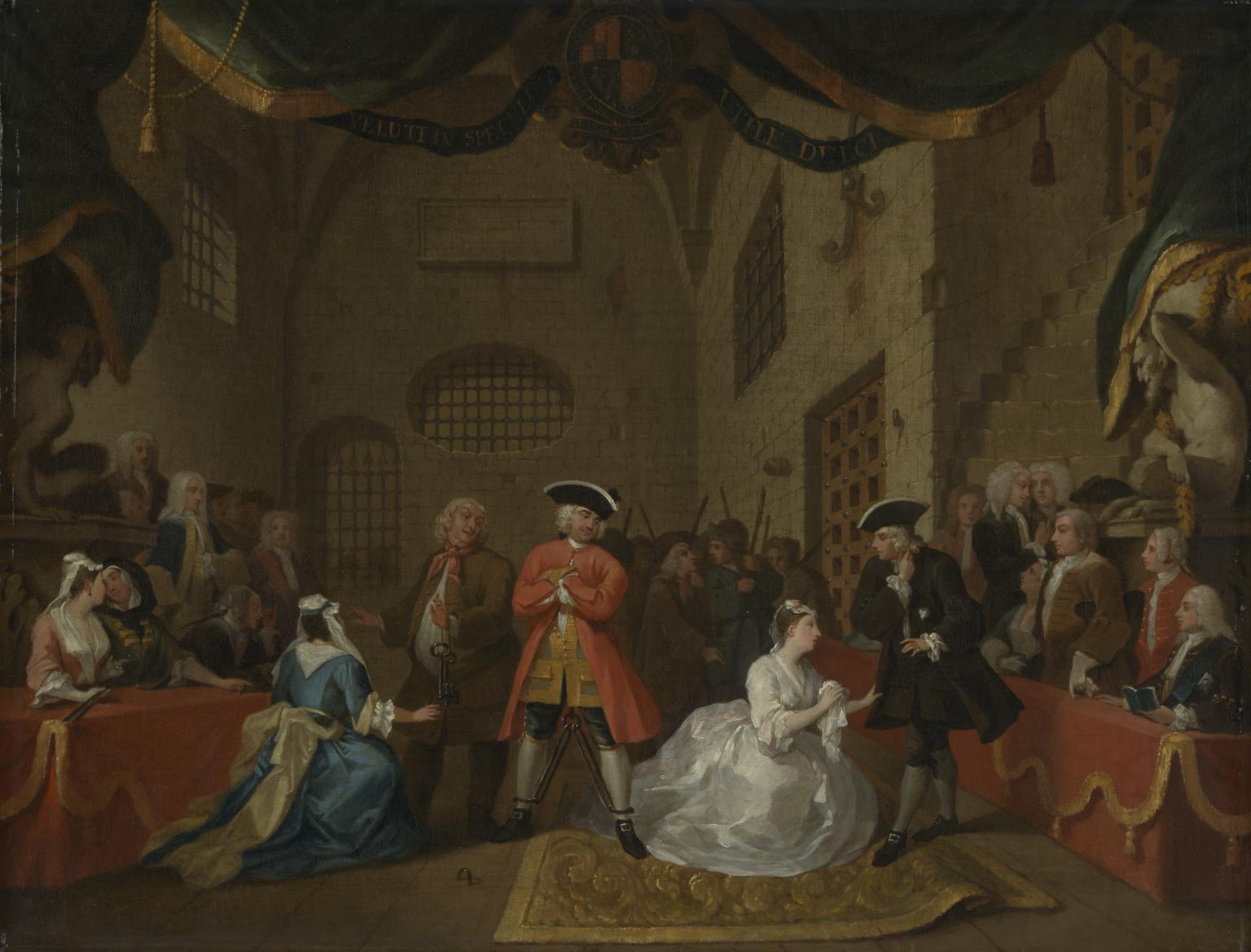
William Hogarth, A Scene from ‘The Beggar’s Opera’ VI 1731
This is one of the first paintings made of an English stage performance. The Beggar’s Opera by John Gay was an instant success when it was first performed at Lincoln’s Inn Fields Theatre, London, in 1728. William Hogarth captures the climactic moment of the play: the imprisoned highwayman, Macheath, stands in the centre, while two women (both believing themselves to be his wife) plead for his release. Lavinia Fenton, the actor in white, seems to gaze directly at her real-life lover, the Duke of Bolton, seated in the box to the right.
Gallery label, September 2024
13/28
artworks in Metropolis
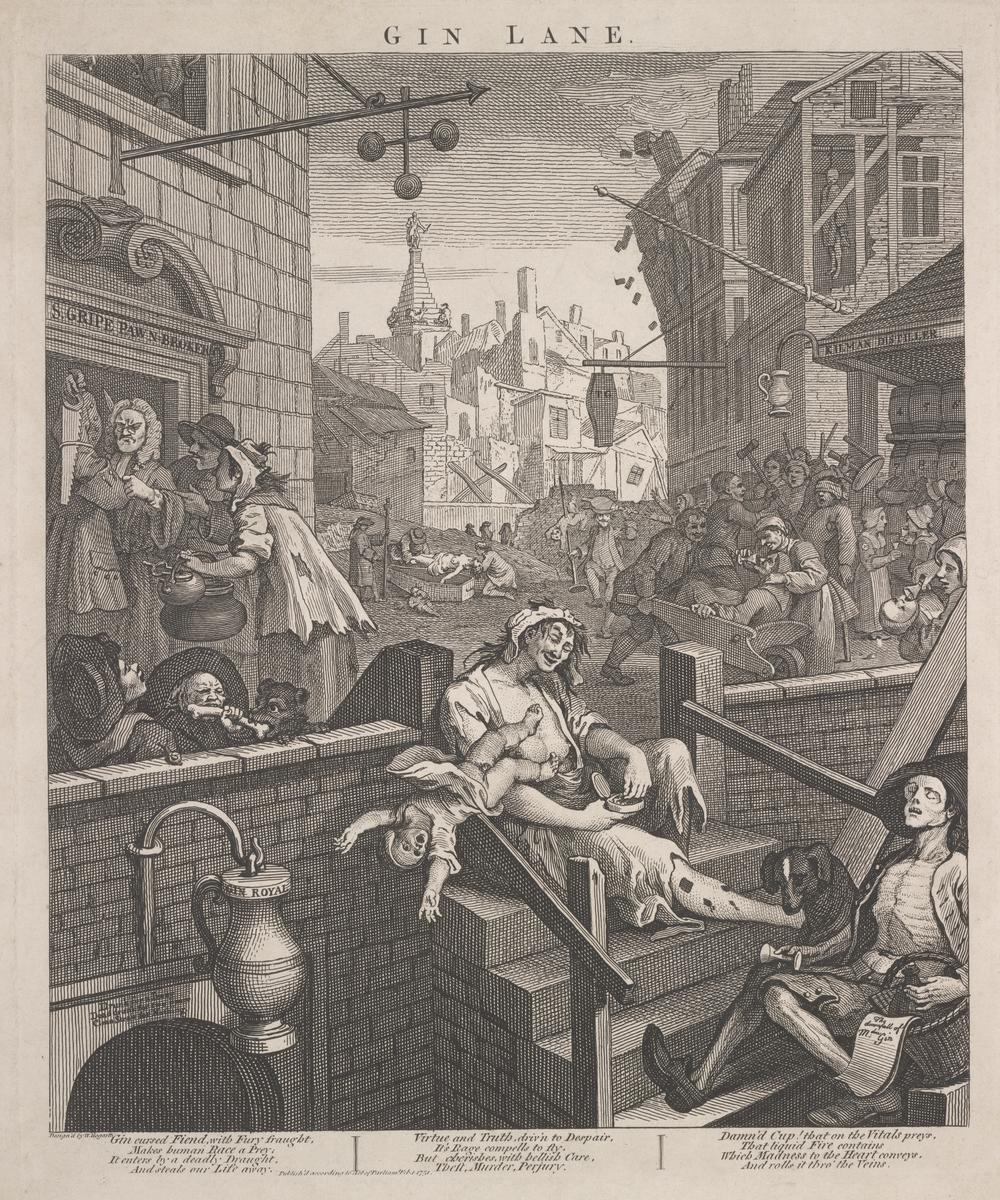
William Hogarth, Gin Lane 1751
The production of cheap gin was the scourge of London’s poorer districts in the early eighteenth-century. Unregulated and highly potent, the gin was often mixed with dangerous substances. William Hogarth’s print shows its destructive effects. It was produced in support of the Gin Act (1751) which sought to control gin production and consumption.
Gallery label, August 2024
14/28
artworks in Metropolis
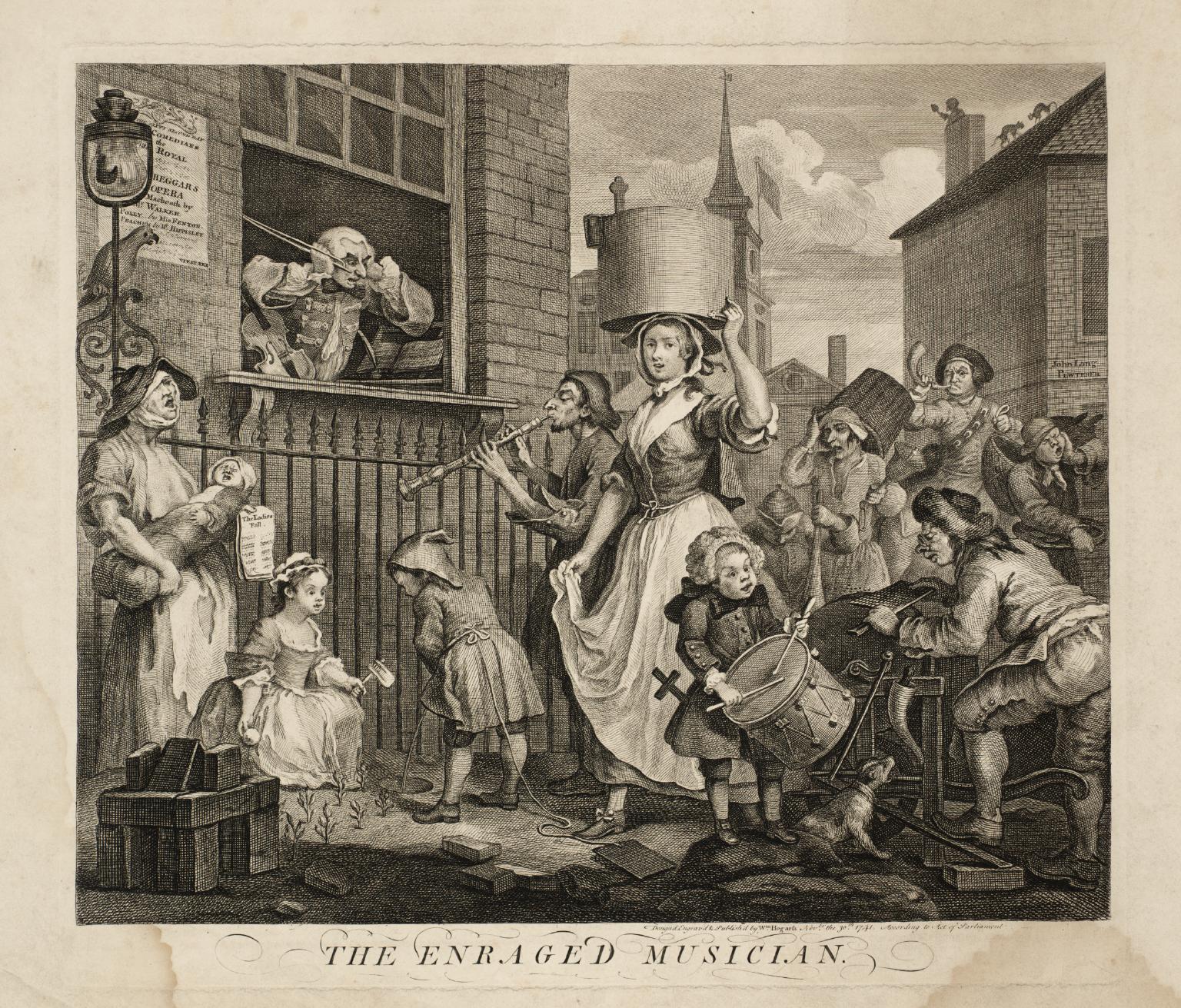
William Hogarth, The Enraged Musician 1741
The streets of London were a throng of noise and activity. Various street hawkers would cry out to advertise their goods and attract buyers, while ballad singers and street musicians entertained the passing crowd. William Hogarth shows the frustration of a violinist as he is driven to distraction by the cacophony outside his window.
Gallery label, August 2024
15/28
artworks in Metropolis
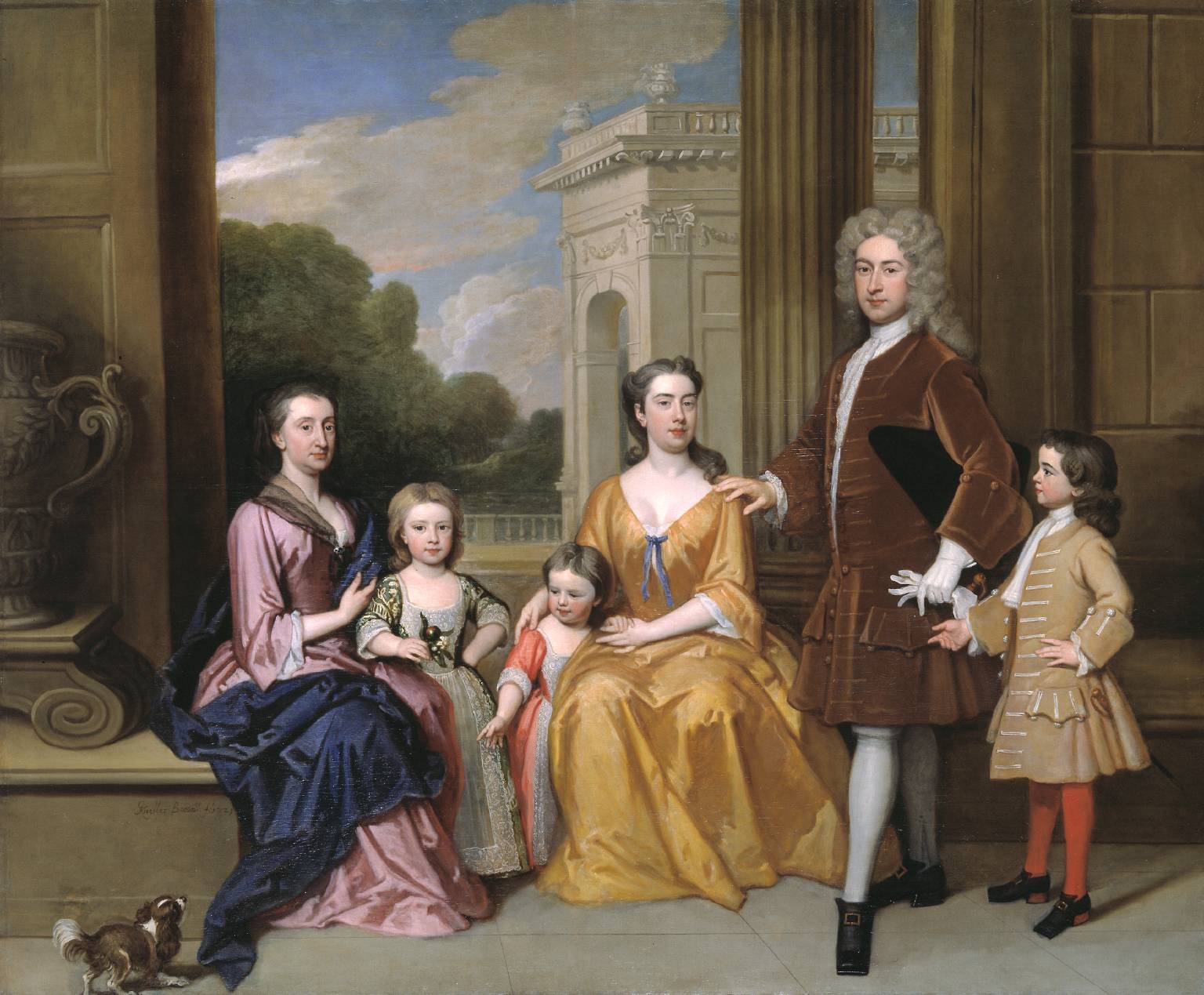
Sir Godfrey Kneller, The Harvey Family 1721
This painting shows the Harvey family of Rolls Park, Chigwell, Essex. Their family wealth was based on business as merchants trading in the Levant (modern-day Syria and Lebanon) with the Ottoman Empire. An ancestor was William Harvey, who discovered the circulation of blood. The scale and format of this picture imitates the aristocratic style of grand courtly portraiture. Such striking paintings were meant to be seen in country house galleries where other portraits were on show, so that the continuity of the family over generations could be stressed.
Gallery label, September 2024
16/28
artworks in Metropolis
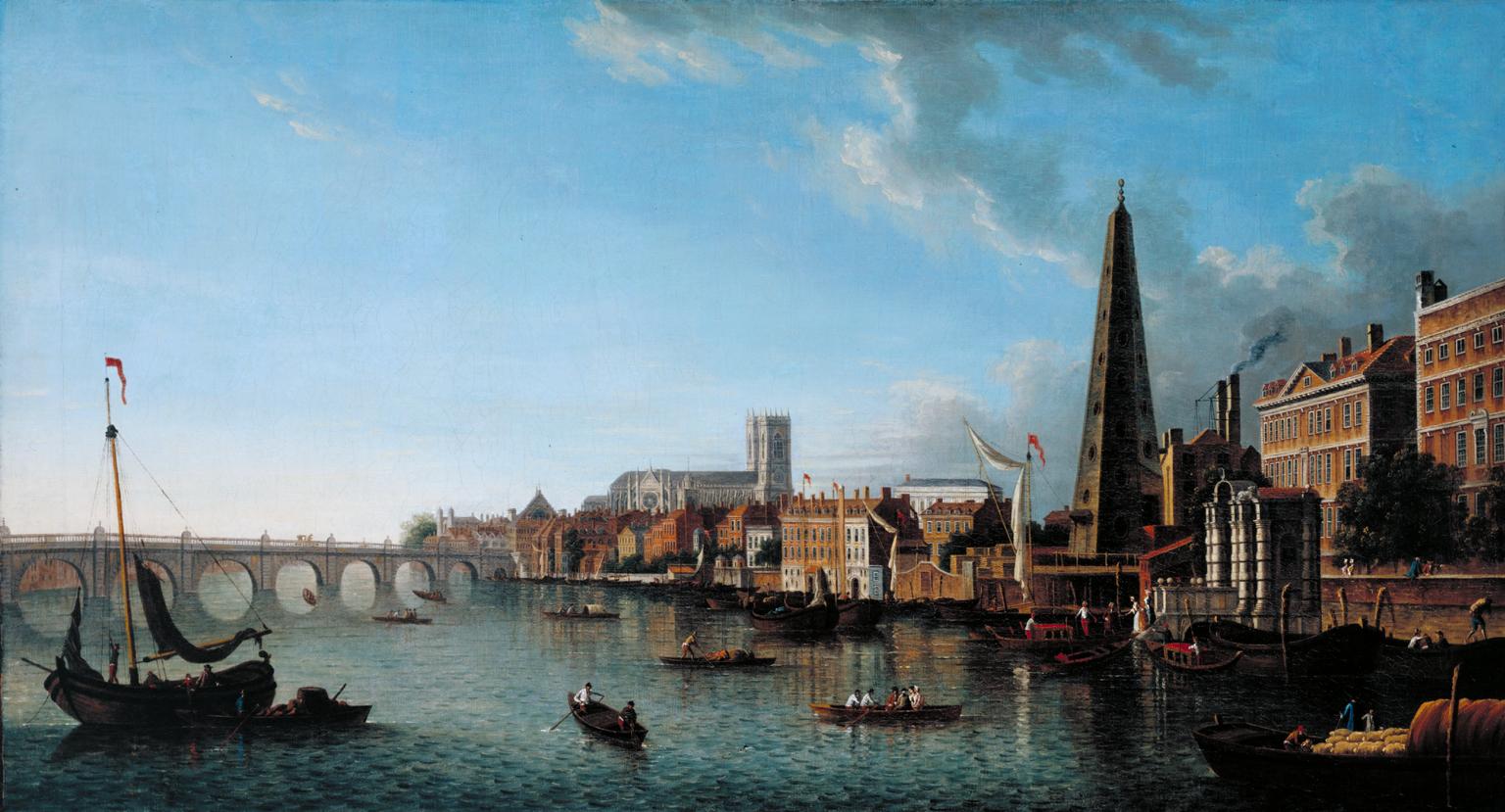
after Samuel Scott, A View of the Thames with the York Buildings Water Tower &²Ô²ú²õ±è;?³¦.1760–70
This view of the north bank of the Thames shows Westminster Abbey in the centre, the top of the Houses of Parliament to its left and the Banqueting House in Whitehall to its right. The large pyramid shaped structure is the water tower of the York Buildings water company. It supplied water from the Thames to houses on The Strand. On the right people descend some steps towards a boat. Influenced by Canaletto, Samuel Scott presents an idealised view of the bustling activity of the Thames, of industry and leisure.
Gallery label, September 2024
17/28
artworks in Metropolis
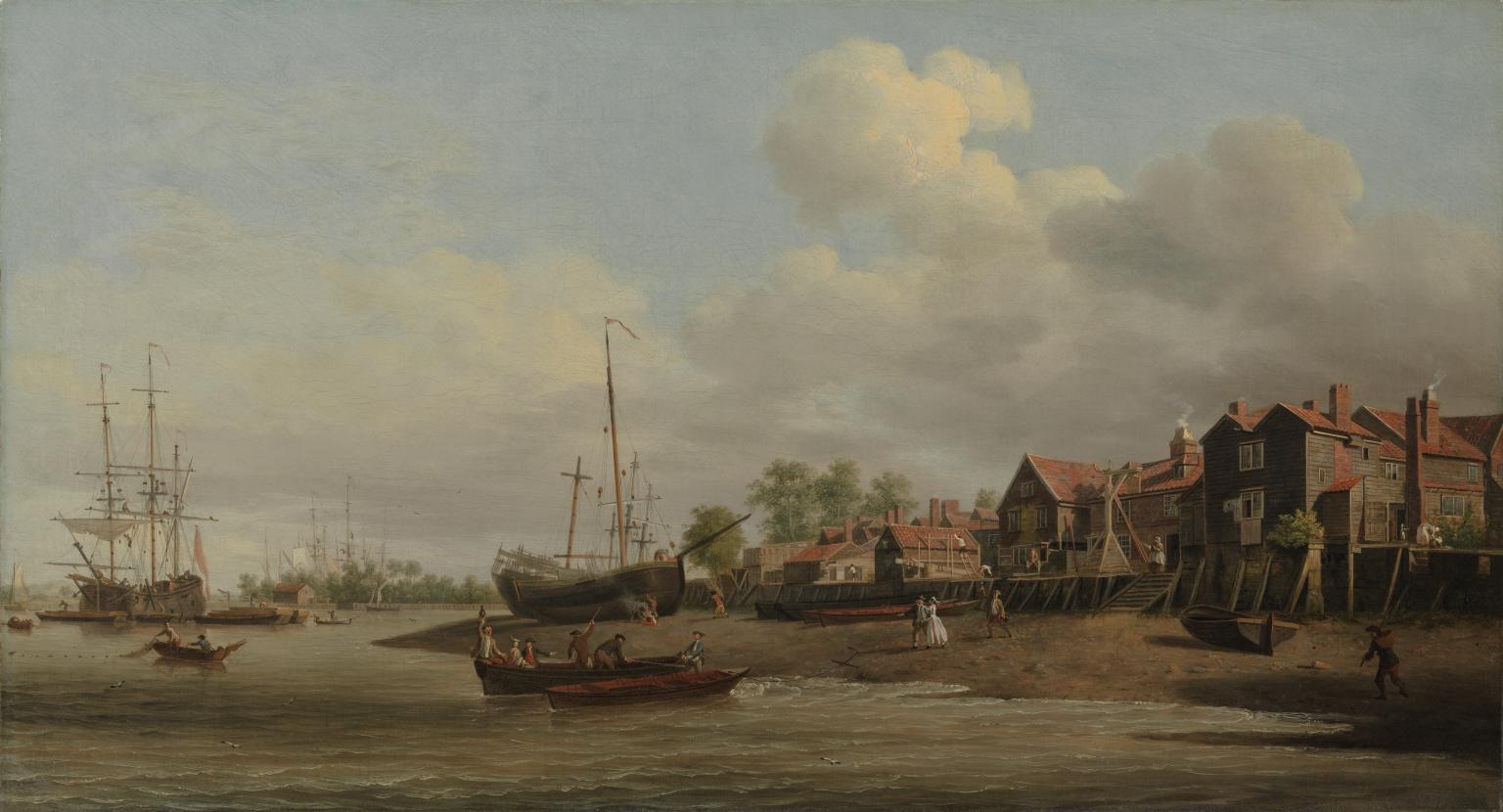
Samuel Scott, A Morning, with a View of Cuckold’s Point &²Ô²ú²õ±è;³¦.1750–60
Cuckold’s Point marks a sharp bend on the Thames near the church of St Mary, Rotherhithe. The unusual name came from the post surmounted by a pair of horns, shown by the steps on the right. Horns indicated a cuckold: a man whose wife had cheated on him. This view and its pair, depicting Nine Elms, were designed to complement each other by showing river vistas looking west and east. They also show contrasting times of day: Cuckold’s Point is seen in a silvery morning light and Nine Elms in an evening glow.
Gallery label, September 2024
18/28
artworks in Metropolis
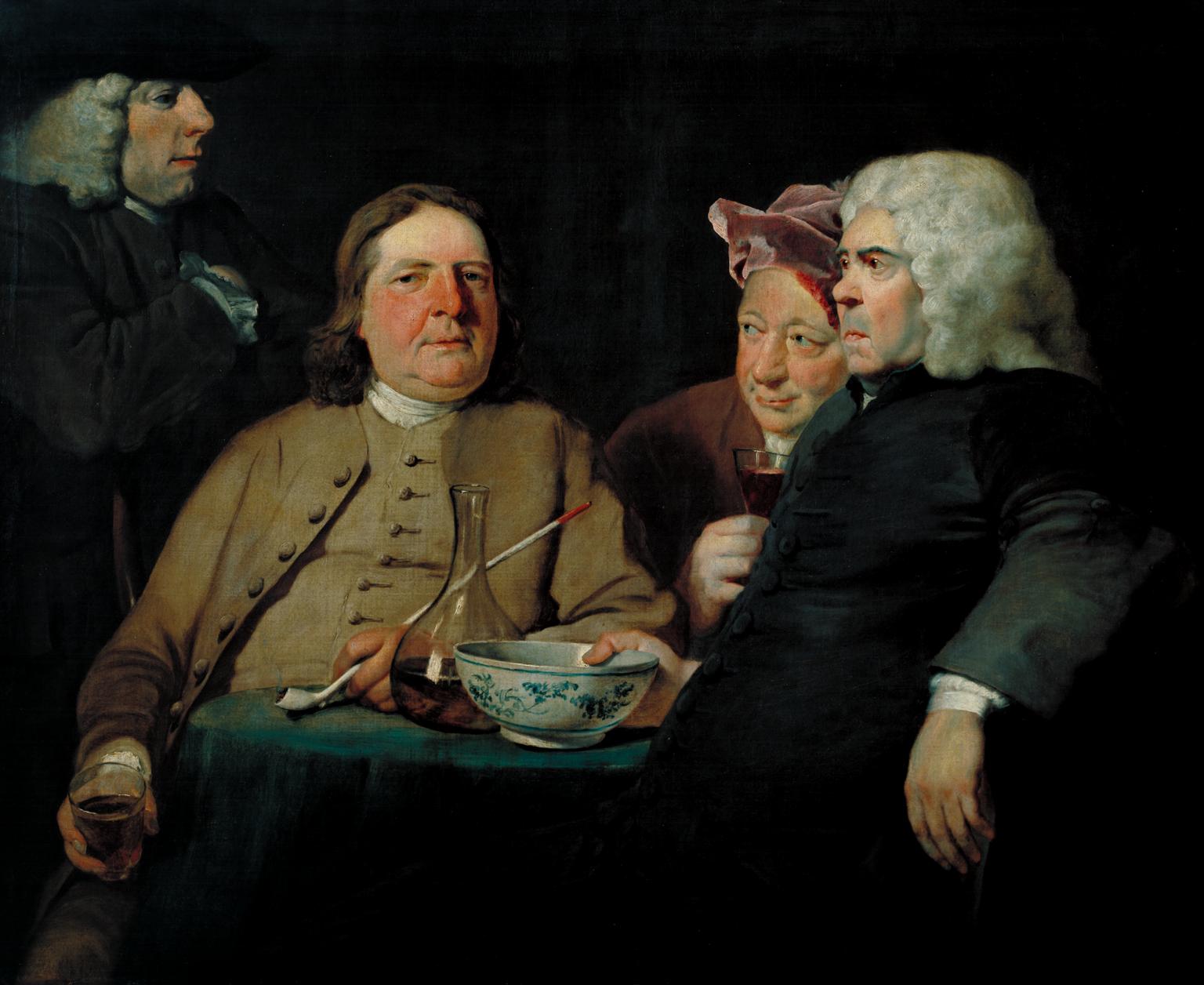
Joseph Highmore, Mr Oldham and his Guests &²Ô²ú²õ±è;³¦.1735–45
This informal group portrait was commissioned by Nathaniel Oldham to commemorate a dinner party at his home. Oldham came home from hunting so late that the friends he had invited to dinner ate without him. He found them relaxing with a bowl of hot wine. Oldham is shown on the far left. In the centre, holding a pipe, is a neighbouring farmer. His friend, a local school master, holds a blue and white bowl. Between them, wearing a red velvet cap, is Joseph Highmore himself, who was an old friend of Oldham.
Gallery label, September 2024
19/28
artworks in Metropolis
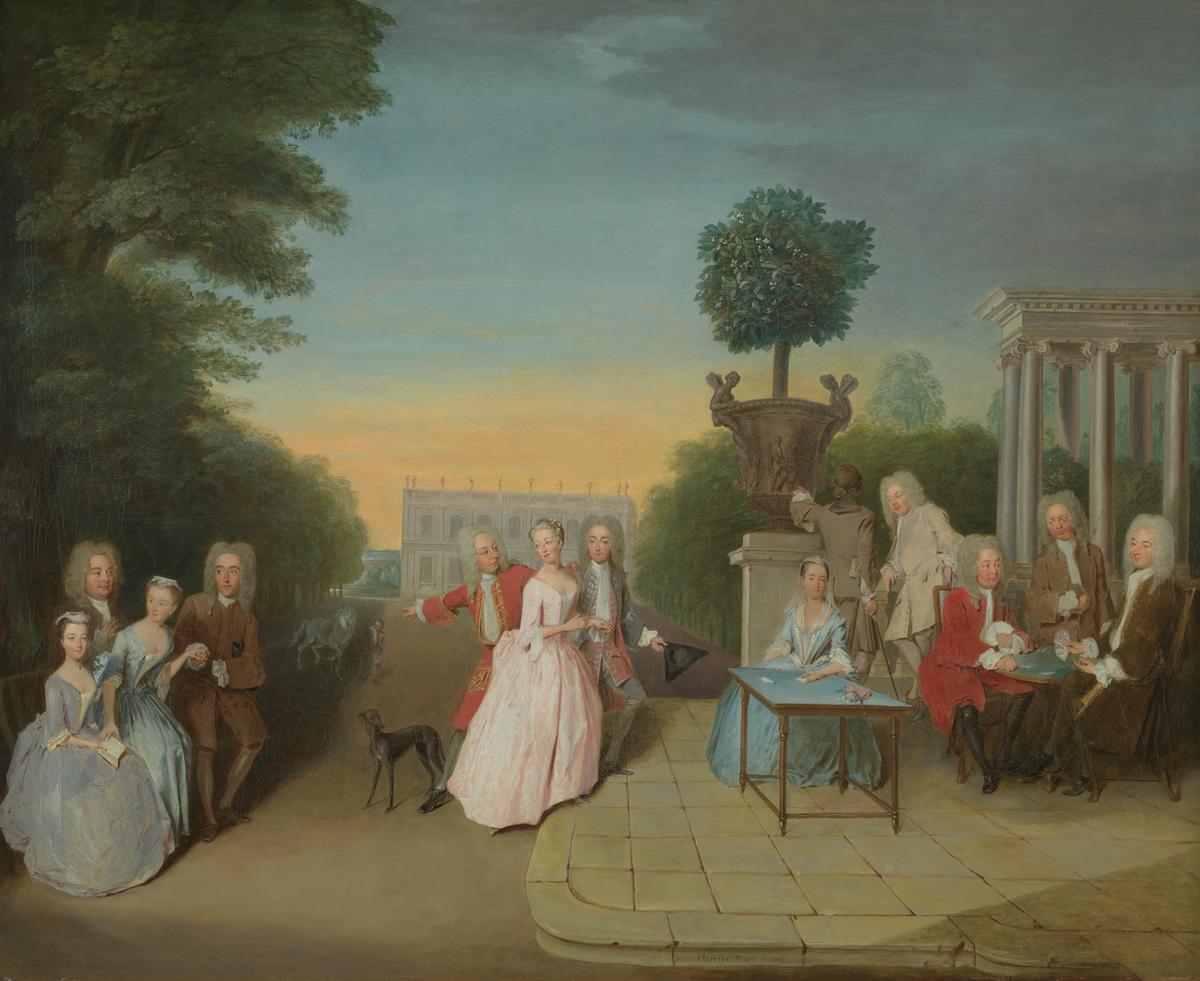
Philip Mercier, The Schutz Family and their Friends on a Terrace 1725
In this emblematic marriage portrait, the groom, probably Augustus Schutz, leads his bride towards his family as she takes a backward glance at her own. Several members of the Schutz family held positions at the court of Hanover and it may be that this portrait also acts as an endorsement of the Hanoverian succession. The orange tree in the urn may symbolise William III and the House of Orange, while the white horse could represent the House of Hanover, whose heraldic device was a horse ‘courant argent’ (a white running horse).
Gallery label, September 2024
20/28
artworks in Metropolis
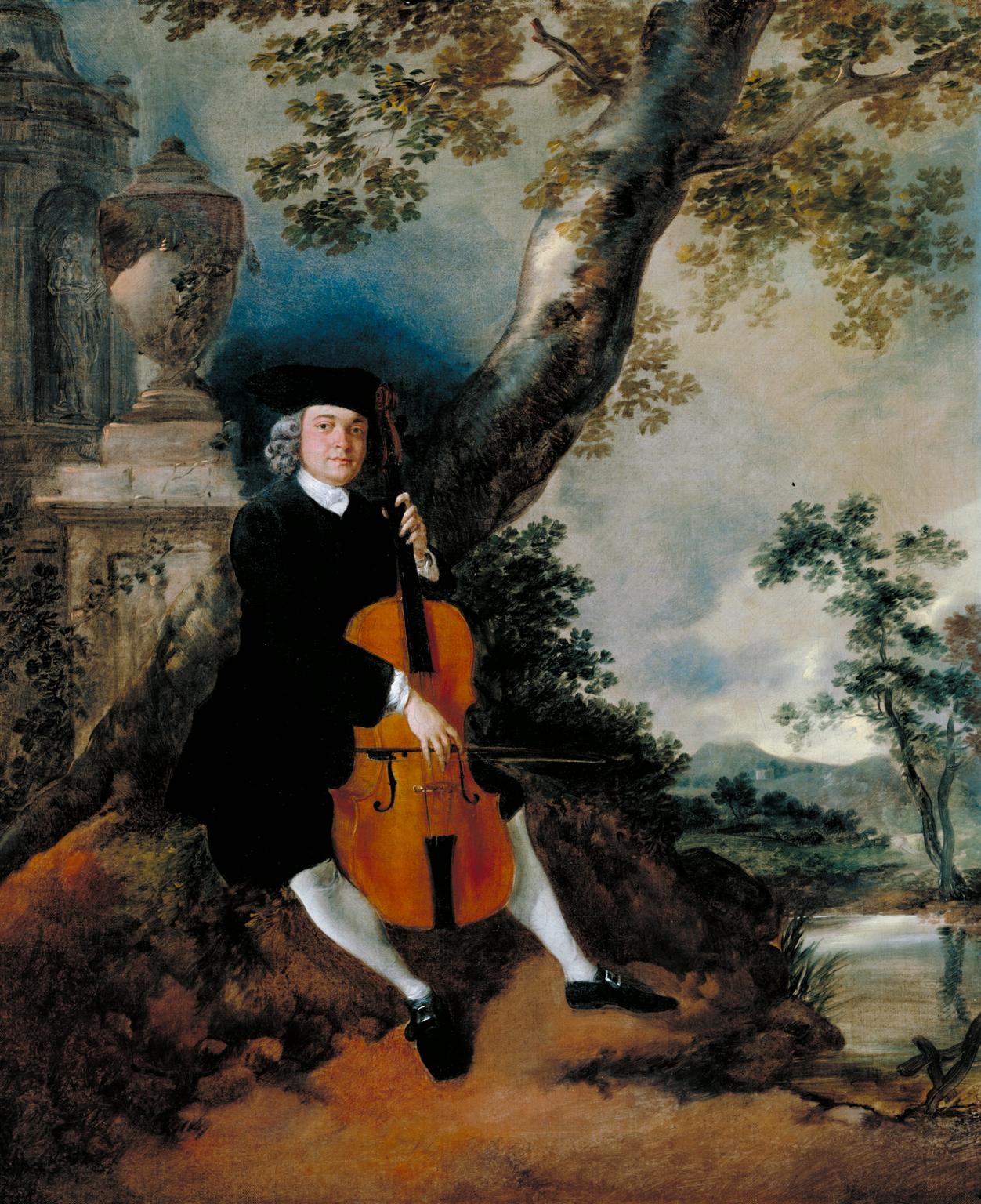
Thomas Gainsborough, The Rev. John Chafy Playing the Violoncello in a Landscape &²Ô²ú²õ±è;³¦.1750–2
Rev. John Chafy was the vicar at Great Bricett in Suffolk, near Sudbury where Thomas Gainsborough lived at this time. Chafy was a talented musician. Gainsborough too is known to have played several instruments, and was a member of the Ipswich Musical Club. In the temple behind Chafy here, is a statue holding a lyre, the attribute of the Muses of dancing and love poetry. This is probably a reference to Chafy’s forthcoming marriage. Gainsborough was the most successful British portrait painter of the second half of the 18th century.
Gallery label, September 2024
21/28
artworks in Metropolis
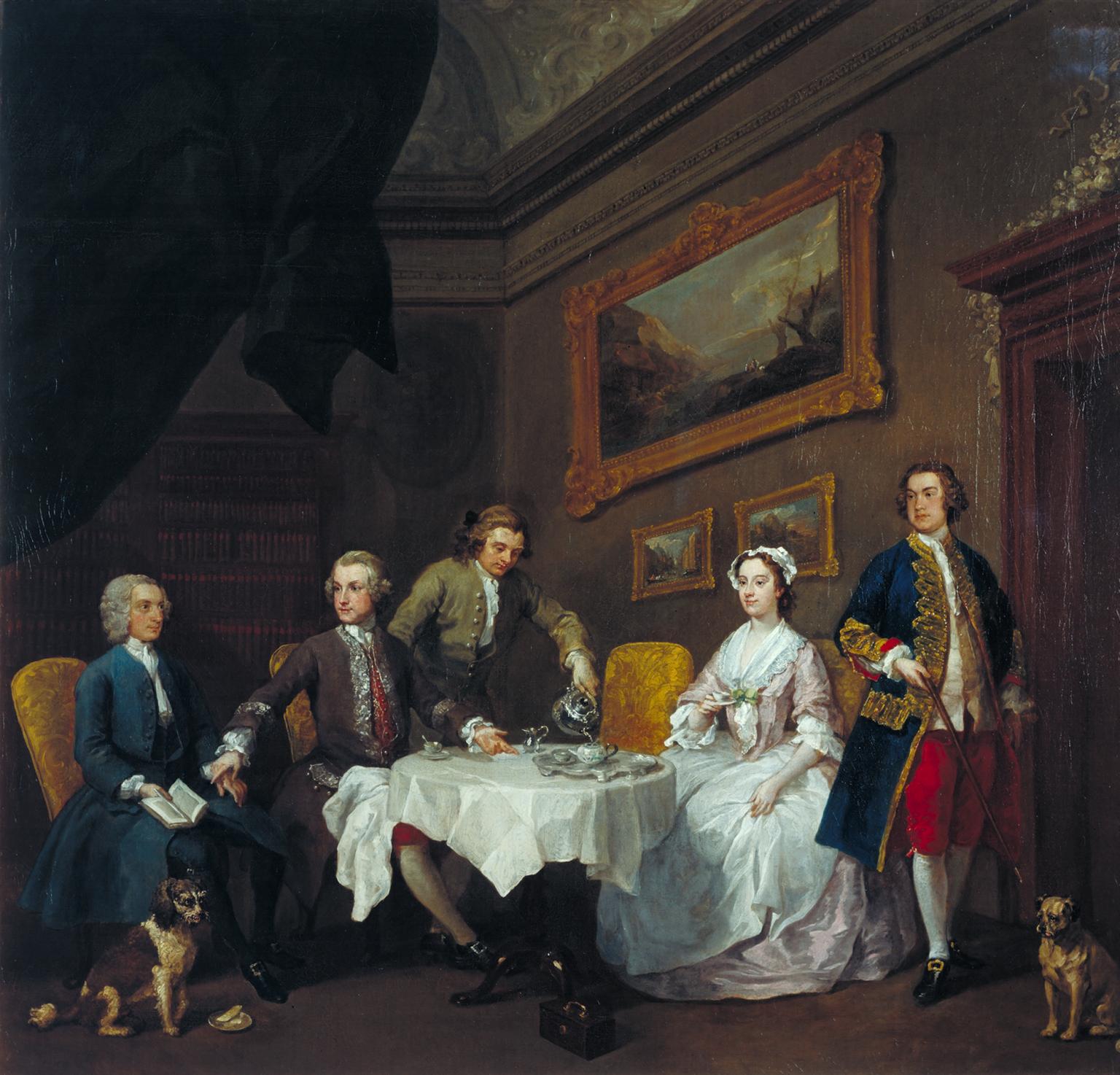
William Hogarth, The Strode Family c.1738
William Hogarth’s lively small-scale ‘conversation pieces’ (informal group portraits) were fashionable in the 1730s. They show the sitters in natural poses, in a domestic setting, engaged in everyday activities like conversation or drinking tea. A tea caddy is pictured on the floor here. William Strode was a wealthy London businessman. His family made its money through trading shares in the South Sea Company, which trafficked enslaved people. He sits next to his tutor Dr Arthur Smyth, later Archbishop of Dublin. Also depicted is Lady Anne Cecil, recently married to William, and his relative Colonel Strode.
Gallery label, September 2024
22/28
artworks in Metropolis
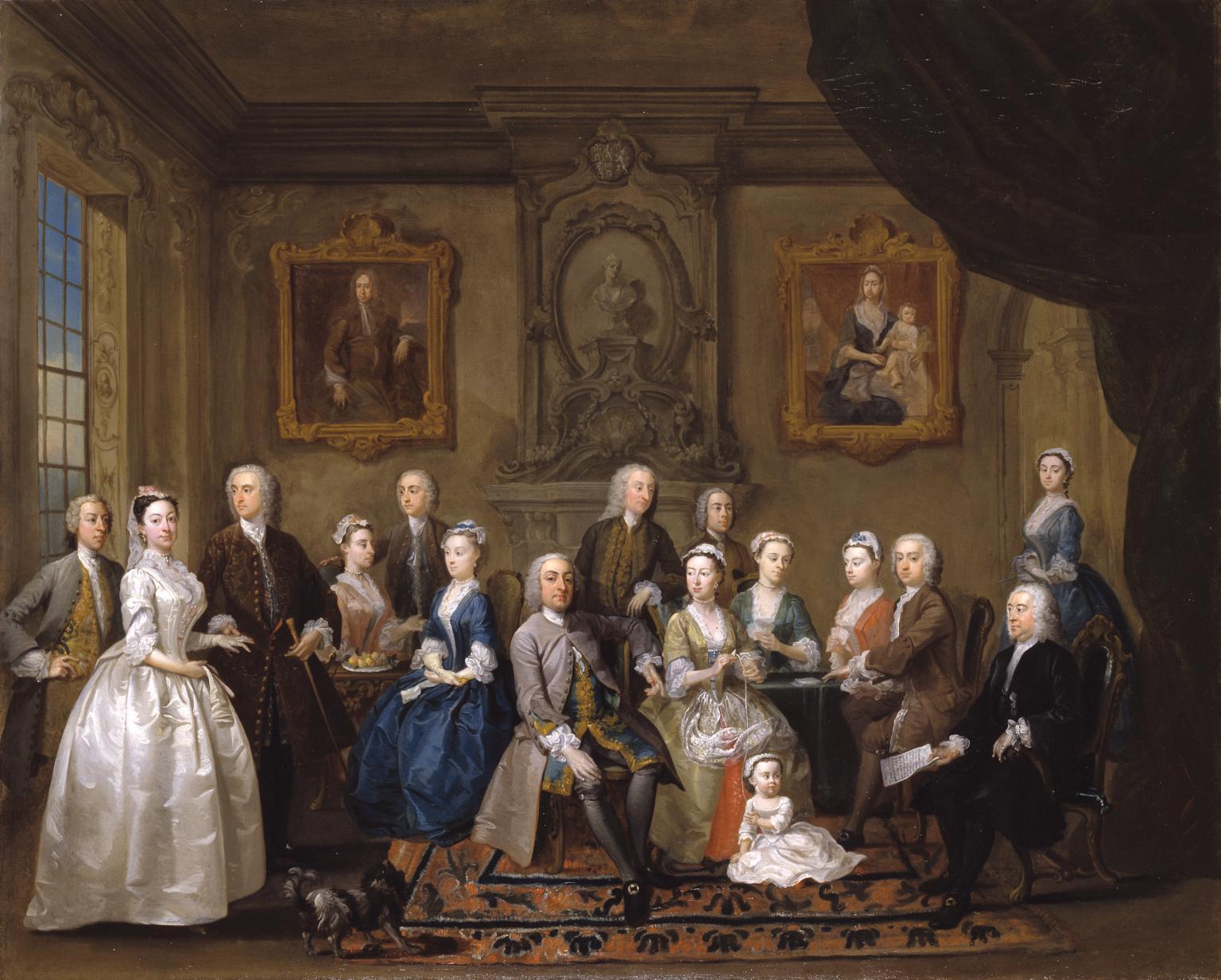
Gawen Hamilton, The Du Cane and Boehm Family Group &²Ô²ú²õ±è;1734–5
This formal group portrait is a record of the dynastic union, through marriage, of the financially powerful Du Cane and Boehm families. They were both of Huguenot (French Protestant) descent. Persecuted in France, Huguenots fled for the safety of Protestant countries. Around 40-50,000 Huguenots settled in England. Most lived in London, particularly in the Spitalfields area to the east of the city area, where they founded a silk weaving industry. Many others were skilled craftsmen, particularly silversmiths. In relative terms, this was one of the largest episodes of immigration to Britain.
Gallery label, September 2024
23/28
artworks in Metropolis
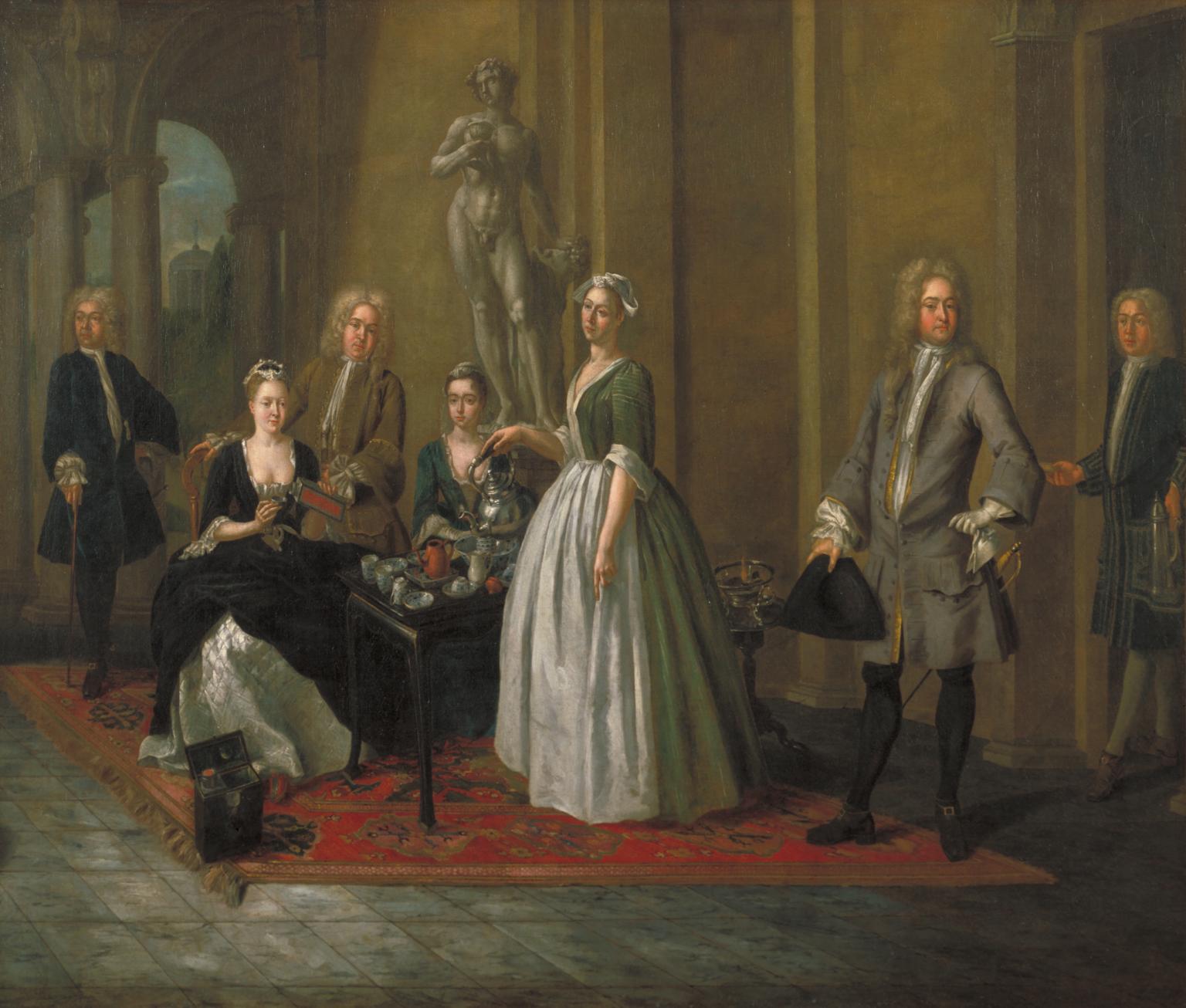
Joseph Van Aken, An English Family at Tea c.1720
In the 18th century, tea was an expensive commodity, as were the items shown here related to its consumption: the tea table, silver and porcelain. Tea was a bitter drink, sweetened with sugar produced in British colonies in the Caribbean with the labour of enslaved African people. Here, the caddy (tea box) is shown in the foreground. Its contents were normally kept locked by the lady of the household, shown here dispensing the precious leaves. Tea drinking demonstrated wealth, domesticity and genteel informality. In the 18th century, it came to epitomise civilised behaviour for British people.
Gallery label, September 2024
24/28
artworks in Metropolis
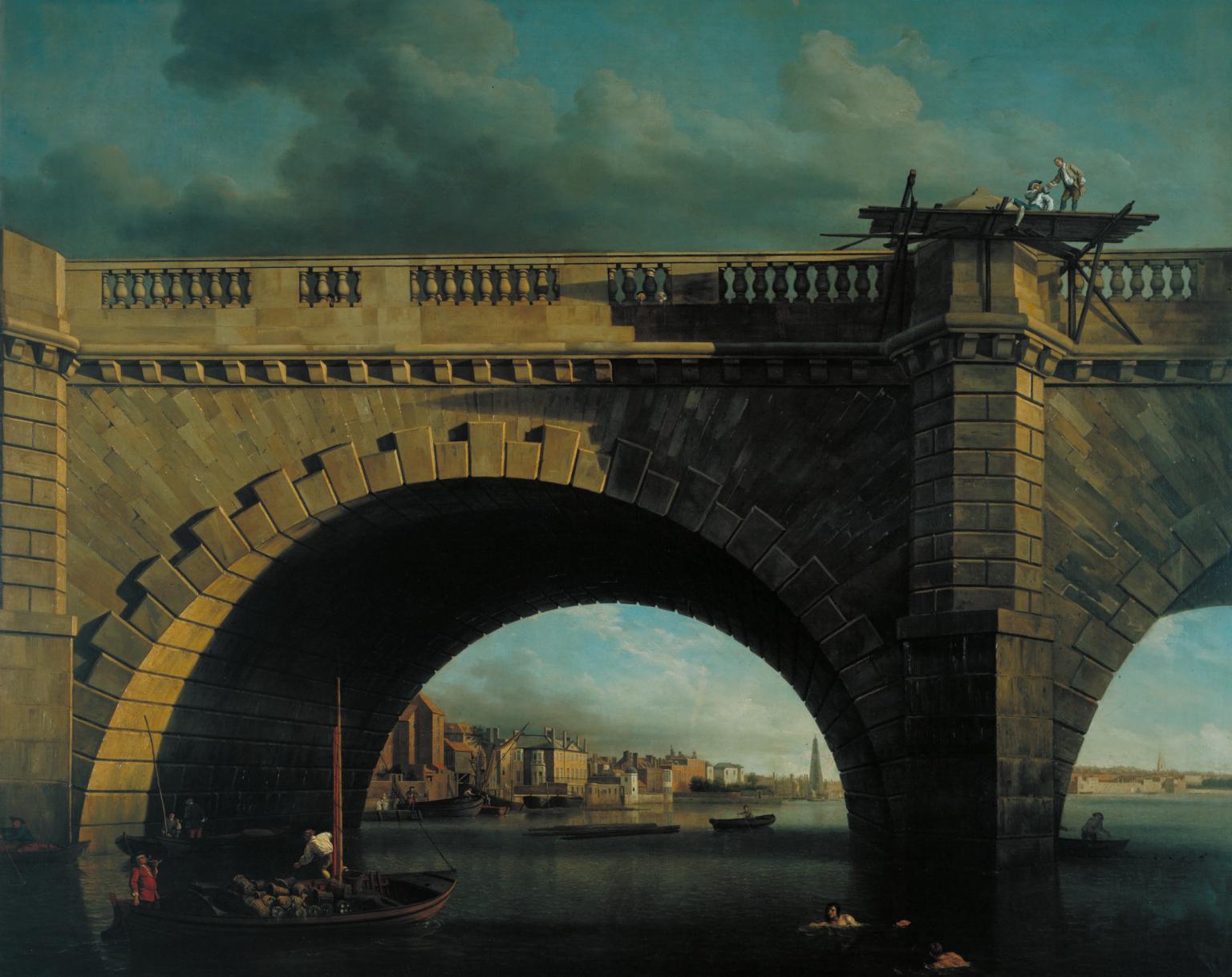
Samuel Scott, An Arch of Westminster Bridge c.1750
This work captures an important event in the history of London: the building of Westminster Bridge. Shown near completion, it was the first major bridge to be built over the Thames in over 600 years. During the 11 years of its construction, it was painted by many artists, including Canaletto and Richard Wilson. The arrival of Canaletto in England in 1746 may have stimulated Samuel Scott to compete by producing similar views of London scenery, particularly along the Thames. Like Canaletto, Scott has included lively figures, shown here swimming, drinking ale and peeping through the balustrade.
Gallery label, September 2024
25/28
artworks in Metropolis
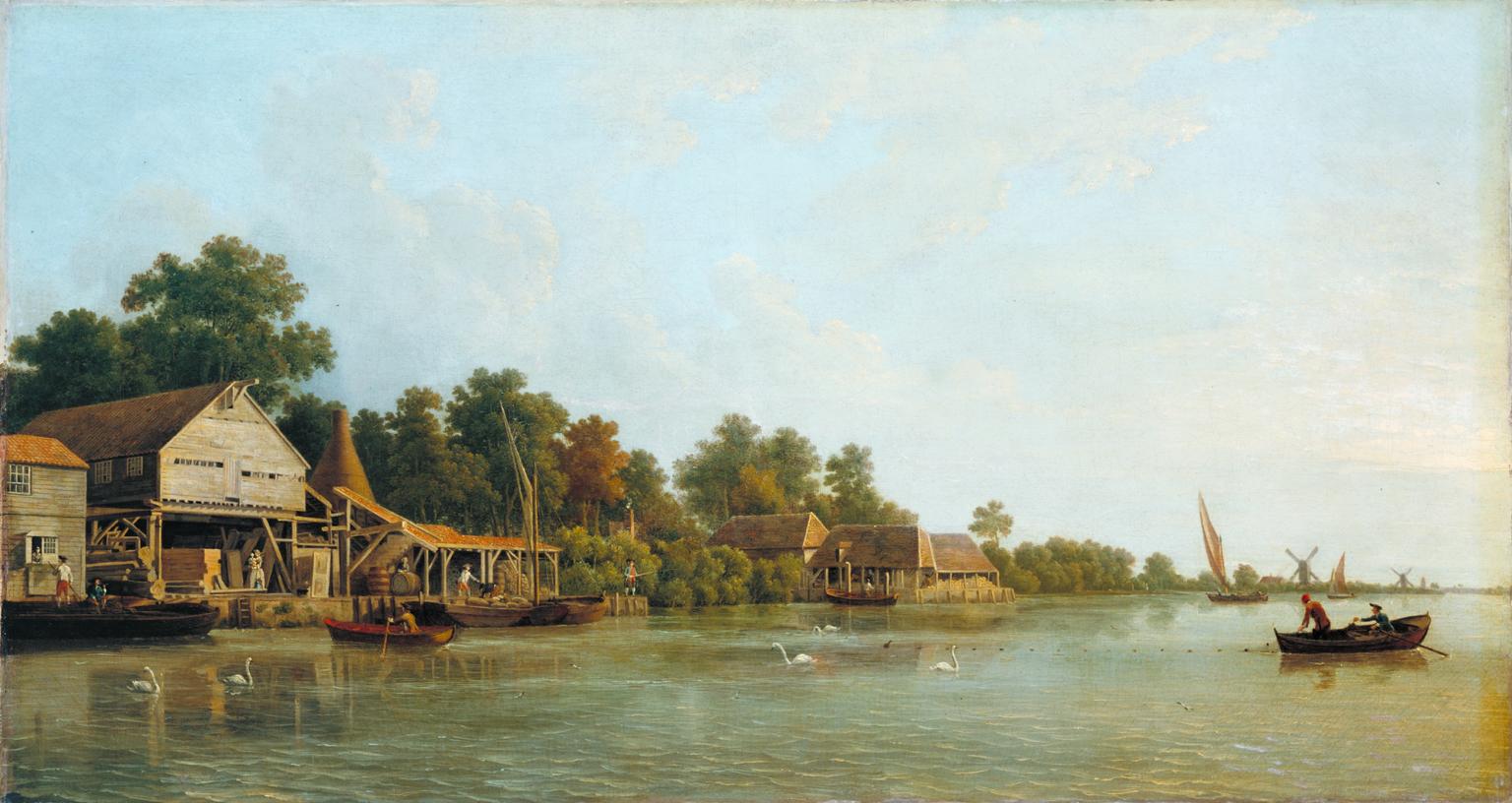
Samuel Scott, A Sunset, with a View of Nine Elms &²Ô²ú²õ±è;³¦.1750–60
This Thames scene forms a pair with the view of Cuckold’s Point. Nine Elms is the name given to the area dominated today by New Covent Garden Market, which is on the opposite bank from Tate Britain, to the west of Vauxhall Bridge. The view probably shows the Nine Elms pier. The trees in the background are presumably the tall elms that gave the area its name. Scott appears to have taken an interest in the more rural stretches of the Thames after he bought a country retreat at Twickenham in 1749.
Gallery label, September 2024
26/28
artworks in Metropolis
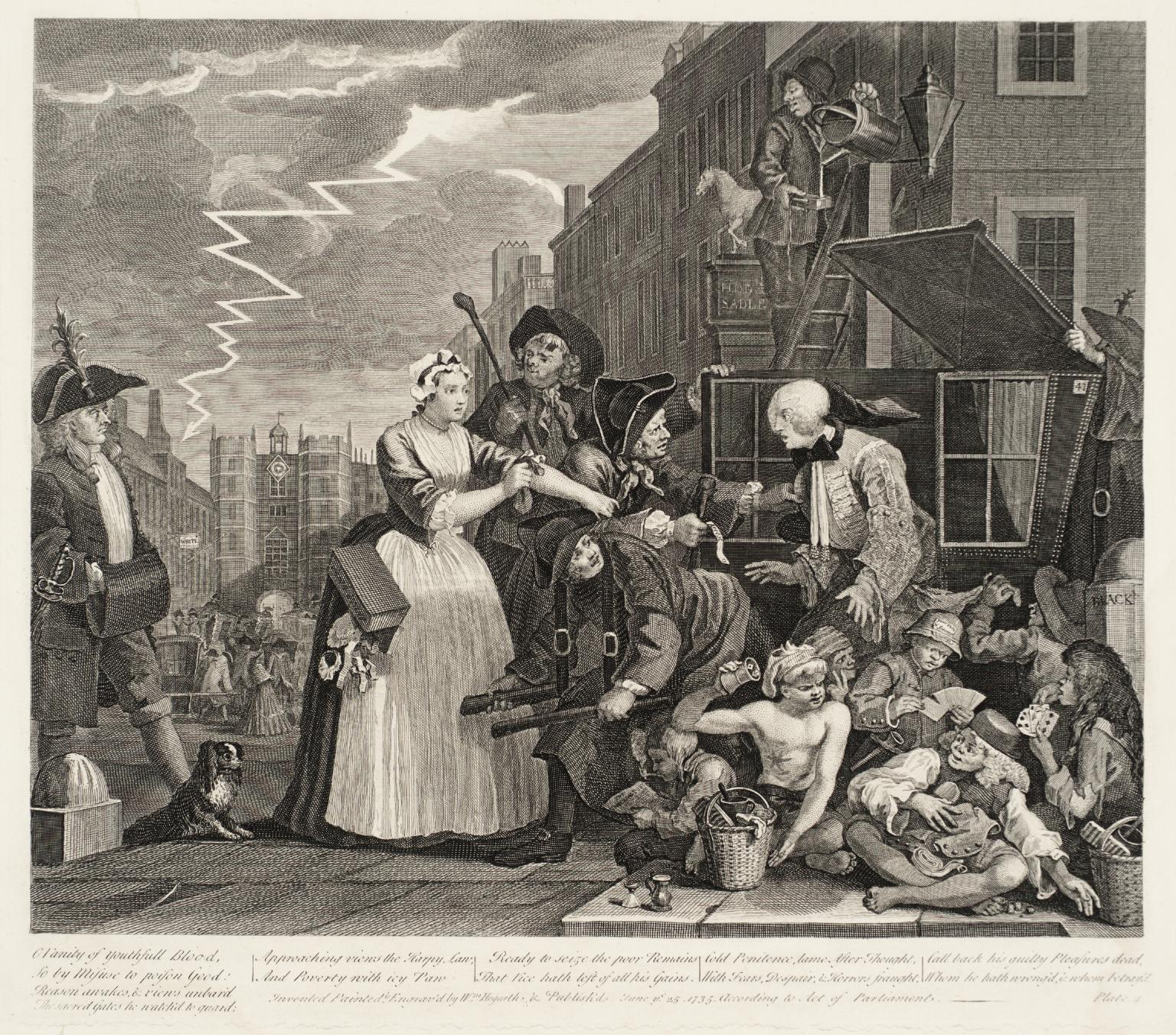
William Hogarth, A Rake’s Progress (plate 4) 1735
A Rake’s Progress is a cautionary tale in eight parts which shows the decline and fall of Tom Rakewell. Tom inherits a large sum of money and then wastes it all on a luxurious and debauched lifestyle of drinking, prostitution and gambling. Here, travelling in a sedan chair on his way to St James’s Palace, he is arrested for non-payment of his debts. He is saved by Sarah Young, his rejected lover.
Gallery label, August 2024
27/28
artworks in Metropolis
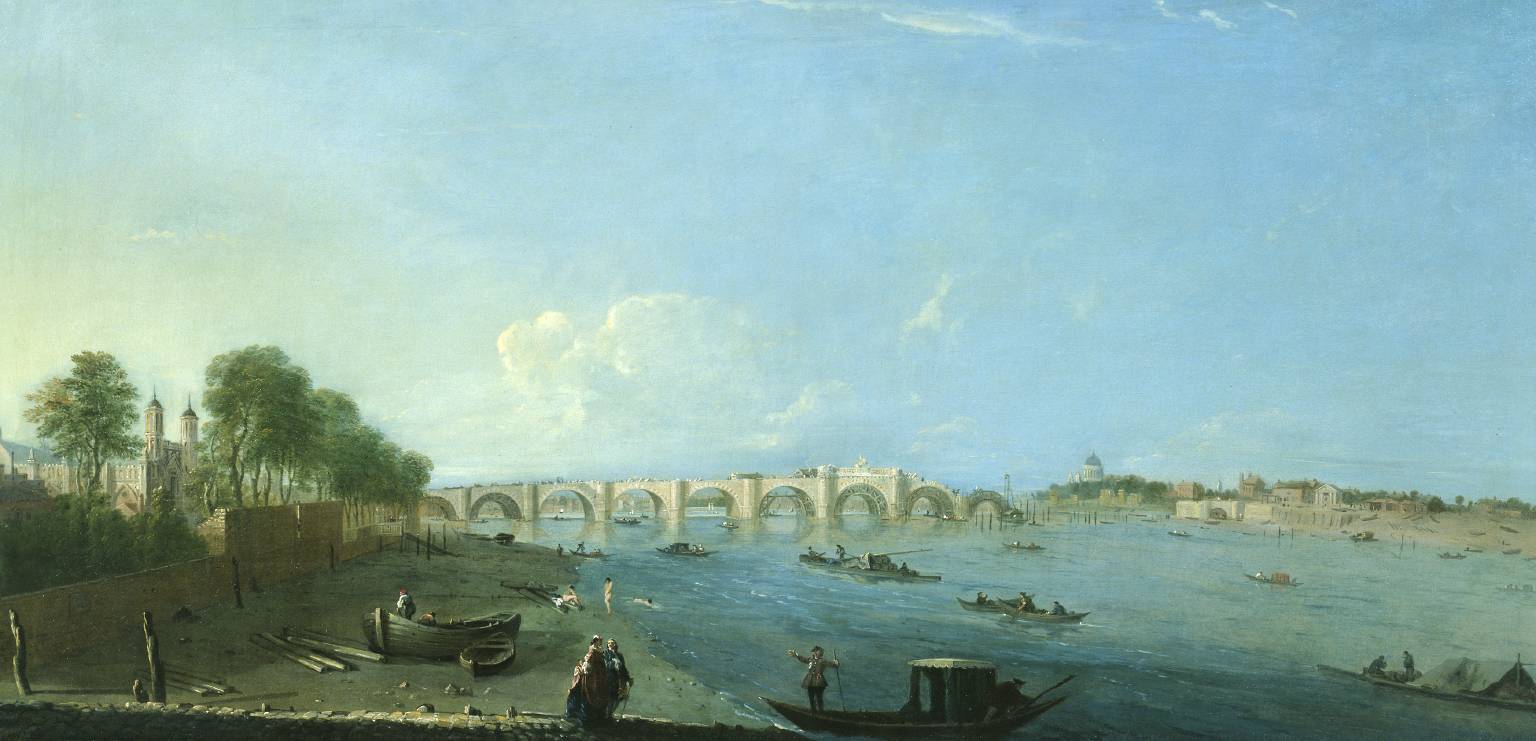
Richard Wilson, Westminster Bridge under Construction 1744
Wilson painted this view of Westminster Bridge under construction in the early autumn of 1744. The bridge, begun in 1738 and opened in 1750, was one of the major civic projects of the century. It became the focal point of many paintings of London, including the one by Samuel Scott, shown nearby. When Wilson painted this picture, he was still working principally as a portrait painter. But his attention to the broad sweep of scenery surrounding the bridge, and sensitive rendition of light, show he was profoundly interested in landscape.
Gallery label, September 2024
28/28
artworks in Metropolis
Art in this room
Sorry, no image available

Sorry, no image available


Sorry, no image available

Sorry, no image available




















You've viewed 6/28 artworks
You've viewed 28/28 artworks
Responses
-
On display at Tate Britain part of Historic and Modern British Art
-
On display at Tate Britain part of Historic and Modern British Art
-
On display at Tate Britain part of Historic and Modern British Art
